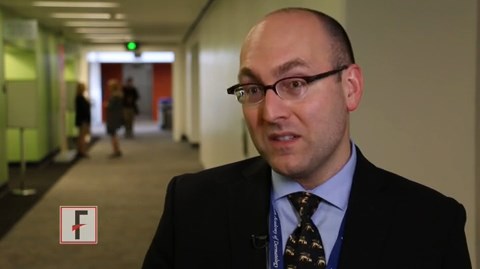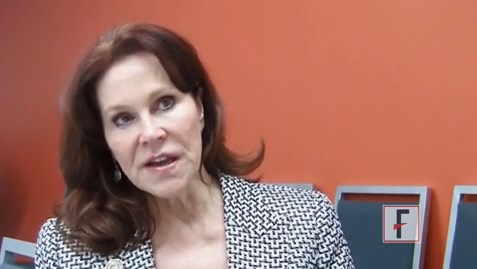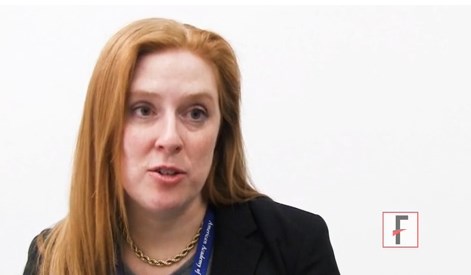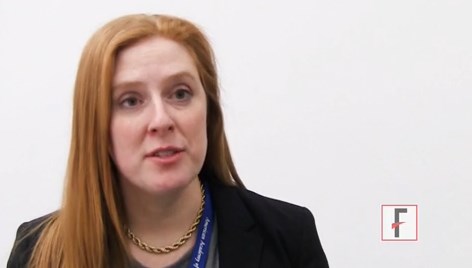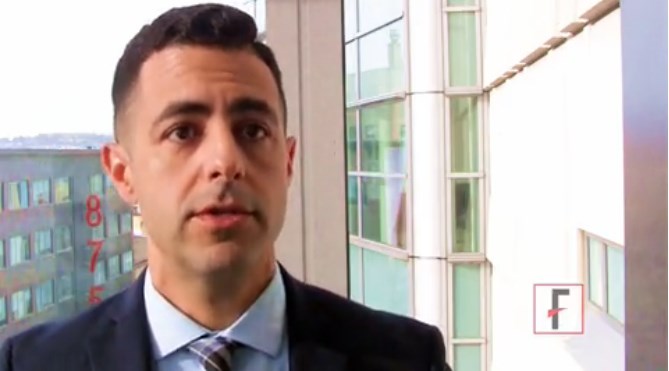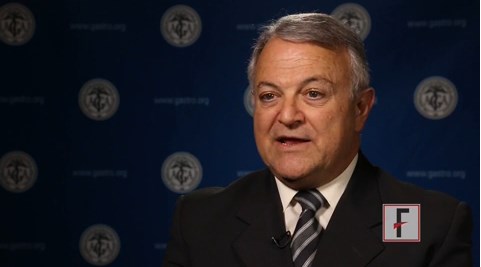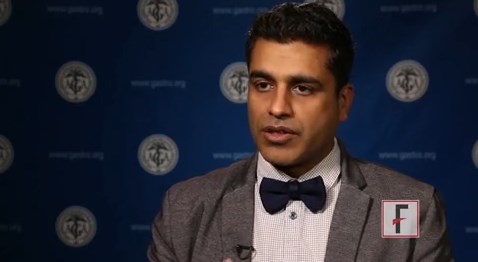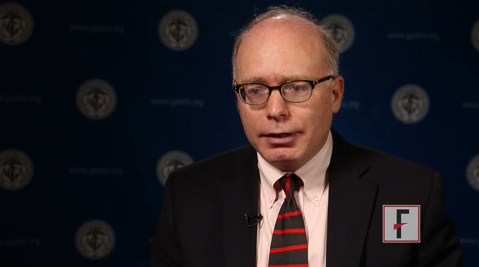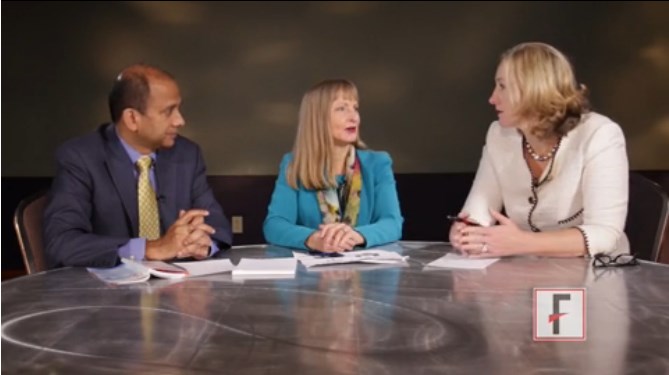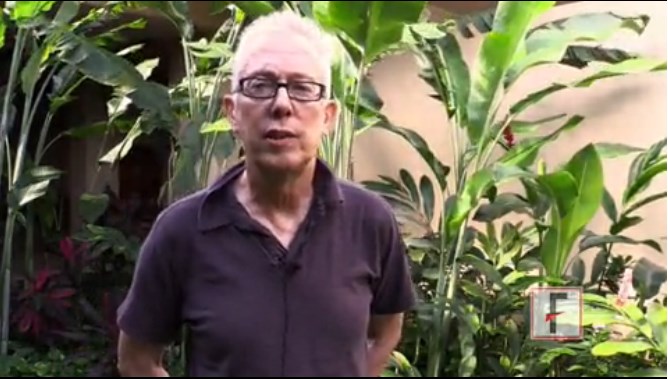User login
VIDEO: Expert compares current atopic dermatitis guidelines
SAN FRANCISCO – Guidelines on atopic dermatitis from the American Academy of Dermatology and the Joint Task Force on Practice Parameters differ in a few important ways.
Dr. Peter Lio of Northwestern University, Chicago, summarized similarities and differences between the guidelines, discussed subtypes of atopic dermatitis, and shared tips on educating parents about food allergies and eczema in an interview at the annual meeting of the American Academy of Dermatology.
The video associated with this article is no longer available on this site. Please view all of our videos on the MDedge YouTube channel
SAN FRANCISCO – Guidelines on atopic dermatitis from the American Academy of Dermatology and the Joint Task Force on Practice Parameters differ in a few important ways.
Dr. Peter Lio of Northwestern University, Chicago, summarized similarities and differences between the guidelines, discussed subtypes of atopic dermatitis, and shared tips on educating parents about food allergies and eczema in an interview at the annual meeting of the American Academy of Dermatology.
The video associated with this article is no longer available on this site. Please view all of our videos on the MDedge YouTube channel
SAN FRANCISCO – Guidelines on atopic dermatitis from the American Academy of Dermatology and the Joint Task Force on Practice Parameters differ in a few important ways.
Dr. Peter Lio of Northwestern University, Chicago, summarized similarities and differences between the guidelines, discussed subtypes of atopic dermatitis, and shared tips on educating parents about food allergies and eczema in an interview at the annual meeting of the American Academy of Dermatology.
The video associated with this article is no longer available on this site. Please view all of our videos on the MDedge YouTube channel
AT THE AAD ANNUAL MEETING
VIDEO: Finesse is key to avoiding exfoliation mistakes
SAN FRANCISCO – Sometimes, salicylic acid is the right call for exfoliation, but sometimes not. Other times microdermabrasion or glycolic acid make sense, or maybe mandelic acid, or something else entirely.
In other words, dermatologists have a lot of options for exfoliation, including not to do it at all. The way to go all comes down to understanding your patient’s skin, and that can be tricky.
Dr. Mary Lupo, clinical professor of dermatology at Tulane University School of Medicine, New Orleans, explained the nuances of exfoliation and shared her advice in an interview at the annual meeting of the American Academy of Dermatology.
The video associated with this article is no longer available on this site. Please view all of our videos on the MDedge YouTube channel
SAN FRANCISCO – Sometimes, salicylic acid is the right call for exfoliation, but sometimes not. Other times microdermabrasion or glycolic acid make sense, or maybe mandelic acid, or something else entirely.
In other words, dermatologists have a lot of options for exfoliation, including not to do it at all. The way to go all comes down to understanding your patient’s skin, and that can be tricky.
Dr. Mary Lupo, clinical professor of dermatology at Tulane University School of Medicine, New Orleans, explained the nuances of exfoliation and shared her advice in an interview at the annual meeting of the American Academy of Dermatology.
The video associated with this article is no longer available on this site. Please view all of our videos on the MDedge YouTube channel
SAN FRANCISCO – Sometimes, salicylic acid is the right call for exfoliation, but sometimes not. Other times microdermabrasion or glycolic acid make sense, or maybe mandelic acid, or something else entirely.
In other words, dermatologists have a lot of options for exfoliation, including not to do it at all. The way to go all comes down to understanding your patient’s skin, and that can be tricky.
Dr. Mary Lupo, clinical professor of dermatology at Tulane University School of Medicine, New Orleans, explained the nuances of exfoliation and shared her advice in an interview at the annual meeting of the American Academy of Dermatology.
The video associated with this article is no longer available on this site. Please view all of our videos on the MDedge YouTube channel
AT THE AAD ANNUAL MEETING
VIDEO: Ask gay and bisexual men about tanning bed use
SAN FRANCISCO – Gay and bisexual men are about six times more likely to use tanning beds than straight men, and have about twice the risk of skin cancer, according to a review of California Health Interview Surveys and the 2013 National Health Interview Survey, which captured results for almost 200,000 adult men and women.
Overall, 5-11% of gay and bisexual men reported using tanning beds, versus about 1-3% of straight men. The lifetime history of skin cancer was about 4.3-6.6% among sexual minority men, but about 2.7-3.3% among straight men. The differences were statistically significant.
The study doesn’t prove cause and effect, but it does define a previously unrecognized group at higher risk for skin cancer, and a potential reason for it. Investigator Dr. Sarah Arron, associate professor of dermatology at the University of California, San Francisco, explained what the findings mean for practicing dermatologists in an interview at the annual meeting of the American Academy of Dermatology.
Meanwhile, the study found that gay and bisexual women were less likely than straight women to report using tanning beds, and less likely to report non-melanoma skin cancer.
The video associated with this article is no longer available on this site. Please view all of our videos on the MDedge YouTube channel
SAN FRANCISCO – Gay and bisexual men are about six times more likely to use tanning beds than straight men, and have about twice the risk of skin cancer, according to a review of California Health Interview Surveys and the 2013 National Health Interview Survey, which captured results for almost 200,000 adult men and women.
Overall, 5-11% of gay and bisexual men reported using tanning beds, versus about 1-3% of straight men. The lifetime history of skin cancer was about 4.3-6.6% among sexual minority men, but about 2.7-3.3% among straight men. The differences were statistically significant.
The study doesn’t prove cause and effect, but it does define a previously unrecognized group at higher risk for skin cancer, and a potential reason for it. Investigator Dr. Sarah Arron, associate professor of dermatology at the University of California, San Francisco, explained what the findings mean for practicing dermatologists in an interview at the annual meeting of the American Academy of Dermatology.
Meanwhile, the study found that gay and bisexual women were less likely than straight women to report using tanning beds, and less likely to report non-melanoma skin cancer.
The video associated with this article is no longer available on this site. Please view all of our videos on the MDedge YouTube channel
SAN FRANCISCO – Gay and bisexual men are about six times more likely to use tanning beds than straight men, and have about twice the risk of skin cancer, according to a review of California Health Interview Surveys and the 2013 National Health Interview Survey, which captured results for almost 200,000 adult men and women.
Overall, 5-11% of gay and bisexual men reported using tanning beds, versus about 1-3% of straight men. The lifetime history of skin cancer was about 4.3-6.6% among sexual minority men, but about 2.7-3.3% among straight men. The differences were statistically significant.
The study doesn’t prove cause and effect, but it does define a previously unrecognized group at higher risk for skin cancer, and a potential reason for it. Investigator Dr. Sarah Arron, associate professor of dermatology at the University of California, San Francisco, explained what the findings mean for practicing dermatologists in an interview at the annual meeting of the American Academy of Dermatology.
Meanwhile, the study found that gay and bisexual women were less likely than straight women to report using tanning beds, and less likely to report non-melanoma skin cancer.
The video associated with this article is no longer available on this site. Please view all of our videos on the MDedge YouTube channel
AT THE AAD ANNUAL MEETING
VIDEO: Once-yearly skin cancer screening might not be enough after organ transplants
SAN FRANCISCO – Older white men are most at risk to die from skin cancer after organ transplants, especially if they’ve had a heart or lung transplant, according to a review of more than a half million U.S. organ transplants from 1987-2013.
It’s long been known that skin cancer is far more likely after solid organ transplants, but it hasn’t been clear until now who’s most likely to die from the disease.
Overall, there were 985 skin cancer deaths following transplant, or 32 deaths per 100,000 patient-years. For white men over 50 years old with thoracic transplants, however, there were 183 deaths per 100,000 patient-years. In contrast, the age-adjusted death rate from malignant melanoma in the general population is 2.7 per 100,000 patient-years.
Investigator Dr. Sarah Arron, associate professor of dermatology at the University of California, San Francisco, explained what to do about the findings in an interview at the annual meeting of the American Academy of Dermatology.
The video associated with this article is no longer available on this site. Please view all of our videos on the MDedge YouTube channel
SAN FRANCISCO – Older white men are most at risk to die from skin cancer after organ transplants, especially if they’ve had a heart or lung transplant, according to a review of more than a half million U.S. organ transplants from 1987-2013.
It’s long been known that skin cancer is far more likely after solid organ transplants, but it hasn’t been clear until now who’s most likely to die from the disease.
Overall, there were 985 skin cancer deaths following transplant, or 32 deaths per 100,000 patient-years. For white men over 50 years old with thoracic transplants, however, there were 183 deaths per 100,000 patient-years. In contrast, the age-adjusted death rate from malignant melanoma in the general population is 2.7 per 100,000 patient-years.
Investigator Dr. Sarah Arron, associate professor of dermatology at the University of California, San Francisco, explained what to do about the findings in an interview at the annual meeting of the American Academy of Dermatology.
The video associated with this article is no longer available on this site. Please view all of our videos on the MDedge YouTube channel
SAN FRANCISCO – Older white men are most at risk to die from skin cancer after organ transplants, especially if they’ve had a heart or lung transplant, according to a review of more than a half million U.S. organ transplants from 1987-2013.
It’s long been known that skin cancer is far more likely after solid organ transplants, but it hasn’t been clear until now who’s most likely to die from the disease.
Overall, there were 985 skin cancer deaths following transplant, or 32 deaths per 100,000 patient-years. For white men over 50 years old with thoracic transplants, however, there were 183 deaths per 100,000 patient-years. In contrast, the age-adjusted death rate from malignant melanoma in the general population is 2.7 per 100,000 patient-years.
Investigator Dr. Sarah Arron, associate professor of dermatology at the University of California, San Francisco, explained what to do about the findings in an interview at the annual meeting of the American Academy of Dermatology.
The video associated with this article is no longer available on this site. Please view all of our videos on the MDedge YouTube channel
AT THE AAD ANNUAL MEETING
VIDEO: Negative online reviews don’t have to hurt your practice
SAN FRANCISCO – By some estimates, about two-thirds of people check online reviews before they select a doctor.
That’s not necessarily a bad thing, according to Dr. Jeffrey Benabio, a dermatologist and director of health care transformation at Kaiser Permanente in San Diego.
Reviews can help you identify where you need to tighten up your practice and also can help open a dialogue with your patients. You don’t have to pull your hair out over a bad review either; bad reviews can be handled productively. Dr Benabio explained how in an interview at the annual meeting of the American Academy of Dermatology.
The video associated with this article is no longer available on this site. Please view all of our videos on the MDedge YouTube channel
SAN FRANCISCO – By some estimates, about two-thirds of people check online reviews before they select a doctor.
That’s not necessarily a bad thing, according to Dr. Jeffrey Benabio, a dermatologist and director of health care transformation at Kaiser Permanente in San Diego.
Reviews can help you identify where you need to tighten up your practice and also can help open a dialogue with your patients. You don’t have to pull your hair out over a bad review either; bad reviews can be handled productively. Dr Benabio explained how in an interview at the annual meeting of the American Academy of Dermatology.
The video associated with this article is no longer available on this site. Please view all of our videos on the MDedge YouTube channel
SAN FRANCISCO – By some estimates, about two-thirds of people check online reviews before they select a doctor.
That’s not necessarily a bad thing, according to Dr. Jeffrey Benabio, a dermatologist and director of health care transformation at Kaiser Permanente in San Diego.
Reviews can help you identify where you need to tighten up your practice and also can help open a dialogue with your patients. You don’t have to pull your hair out over a bad review either; bad reviews can be handled productively. Dr Benabio explained how in an interview at the annual meeting of the American Academy of Dermatology.
The video associated with this article is no longer available on this site. Please view all of our videos on the MDedge YouTube channel
AT THE AAD ANNUAL MEETING
VIDEO: Innovations in technology called key to AGA’s strategic plan
SAN FRANCISCO – AGA President-Elect Michael Camilleri discusses how innovation is an integral part of AGA’s strategic plan during the 2015 AGA Tech Summit. Technologies are beginning to address the unmet needs of patients with gastrointestinal and metabolic diseases, and AGA will keep its physician members well-informed on how these new innovations will transform patient care.
The video associated with this article is no longer available on this site. Please view all of our videos on the MDedge YouTube channel
SAN FRANCISCO – AGA President-Elect Michael Camilleri discusses how innovation is an integral part of AGA’s strategic plan during the 2015 AGA Tech Summit. Technologies are beginning to address the unmet needs of patients with gastrointestinal and metabolic diseases, and AGA will keep its physician members well-informed on how these new innovations will transform patient care.
The video associated with this article is no longer available on this site. Please view all of our videos on the MDedge YouTube channel
SAN FRANCISCO – AGA President-Elect Michael Camilleri discusses how innovation is an integral part of AGA’s strategic plan during the 2015 AGA Tech Summit. Technologies are beginning to address the unmet needs of patients with gastrointestinal and metabolic diseases, and AGA will keep its physician members well-informed on how these new innovations will transform patient care.
The video associated with this article is no longer available on this site. Please view all of our videos on the MDedge YouTube channel
AT THE 2015 AGA TECH SUMMIT
VIDEO: AGA provides full-service device registry support
SAN FRANCISCO – Taking a device from inception through the Food and Drug Administration approval process, CPT coding, payer coverage, and adoption by physicians can take 10 years or more and millions of dollars. Working with the AGA Center for GI Innovation and Technology to develop a registry and trial design can assist in speeding this process. At the 2015 AGA Tech Summit in San Francisco, Dr. Ashish Atreja, director of medical informatics at the Mount Sinai School of Medicine, New York, and chair of the AGA Registry Oversight Committee, discusses how the AGA can provide full-service device registry support. He also discusses the goals of AGA’s STAR registry and provides a look ahead at upcoming registry initiatives.
The video associated with this article is no longer available on this site. Please view all of our videos on the MDedge YouTube channel
SAN FRANCISCO – Taking a device from inception through the Food and Drug Administration approval process, CPT coding, payer coverage, and adoption by physicians can take 10 years or more and millions of dollars. Working with the AGA Center for GI Innovation and Technology to develop a registry and trial design can assist in speeding this process. At the 2015 AGA Tech Summit in San Francisco, Dr. Ashish Atreja, director of medical informatics at the Mount Sinai School of Medicine, New York, and chair of the AGA Registry Oversight Committee, discusses how the AGA can provide full-service device registry support. He also discusses the goals of AGA’s STAR registry and provides a look ahead at upcoming registry initiatives.
The video associated with this article is no longer available on this site. Please view all of our videos on the MDedge YouTube channel
SAN FRANCISCO – Taking a device from inception through the Food and Drug Administration approval process, CPT coding, payer coverage, and adoption by physicians can take 10 years or more and millions of dollars. Working with the AGA Center for GI Innovation and Technology to develop a registry and trial design can assist in speeding this process. At the 2015 AGA Tech Summit in San Francisco, Dr. Ashish Atreja, director of medical informatics at the Mount Sinai School of Medicine, New York, and chair of the AGA Registry Oversight Committee, discusses how the AGA can provide full-service device registry support. He also discusses the goals of AGA’s STAR registry and provides a look ahead at upcoming registry initiatives.
The video associated with this article is no longer available on this site. Please view all of our videos on the MDedge YouTube channel
AT THE 2015 AGA TECH SUMMIT
VIDEO: What makes people predictably irrational?
SAN FRANCISCO – Using behavioral economics to help patients identify and overcome psychological barriers to behavioral change has expanded our understanding of what makes people predictably irrational, according to Dr. David A. Asch.
In an interview at the 2015 AGA Tech Summit, Dr. Asch, executive director of the Penn Medicine Center for Health Care Innovation and professor of health care management at the Wharton School at the University of Pennsylvania, both in Philadelphia, discusses how physicians can incorporate the principles of behavioral economics into their practices to improve patient care.
Dr. Asch disclosed that he is a principal at VAL Health, a behavioral consulting firm.
The video associated with this article is no longer available on this site. Please view all of our videos on the MDedge YouTube channel
On Twitter @dougbrunk
SAN FRANCISCO – Using behavioral economics to help patients identify and overcome psychological barriers to behavioral change has expanded our understanding of what makes people predictably irrational, according to Dr. David A. Asch.
In an interview at the 2015 AGA Tech Summit, Dr. Asch, executive director of the Penn Medicine Center for Health Care Innovation and professor of health care management at the Wharton School at the University of Pennsylvania, both in Philadelphia, discusses how physicians can incorporate the principles of behavioral economics into their practices to improve patient care.
Dr. Asch disclosed that he is a principal at VAL Health, a behavioral consulting firm.
The video associated with this article is no longer available on this site. Please view all of our videos on the MDedge YouTube channel
On Twitter @dougbrunk
SAN FRANCISCO – Using behavioral economics to help patients identify and overcome psychological barriers to behavioral change has expanded our understanding of what makes people predictably irrational, according to Dr. David A. Asch.
In an interview at the 2015 AGA Tech Summit, Dr. Asch, executive director of the Penn Medicine Center for Health Care Innovation and professor of health care management at the Wharton School at the University of Pennsylvania, both in Philadelphia, discusses how physicians can incorporate the principles of behavioral economics into their practices to improve patient care.
Dr. Asch disclosed that he is a principal at VAL Health, a behavioral consulting firm.
The video associated with this article is no longer available on this site. Please view all of our videos on the MDedge YouTube channel
On Twitter @dougbrunk
AT THE 2015 AGA TECH SUMMIT
VIDEO: Experts distill top clinical takeaways from breast cancer symposium
SAN ANTONIO – In a roundtable at the 2014 San Antonio Breast Cancer Symposium, Dr. Jame Abraham, Dr. Linda Bosserman, and Dr. Debra Patt discussed their top selections from the meeting’s presentations.
Among the topics were the promising findings in a small study involving the novel immune checkpoint inhibitor pembrolizumab in advanced triple-negative breast cancer; the SOFT trial, which looked at ovarian suppression with either tamoxifen or an aromatase inhibitor in premenopausal women with hormone receptor–positive disease; and the negative findings on the use of erythropoietin in patients with metastatic breast cancer.
The editors also highlighted findings showing no difference in disease-free survival between node-negative patients receiving six cycles of 5-fluorouracil, epirubicin, and cyclophosphamide and those receiving four cycles of Adriamycin and cyclophosphamide; and data from the Women’s Intervention Nutrition Study, which showed that lifestyle and dietary changes can have a notable impact on outcomes in women with early-stage, treated breast cancer.
Management of therapy side effects, fertility concerns in younger patients, patient quality of life, and the cost effectiveness of treatment were a subtext to the editors’ discussions of the clinical findings, as they highlighted the importance of looking closely at the risk-benefit relationship in delivering quality, affordable, personalized care to patients with breast cancer.
Dr. Abraham is director of the breast medical oncology at the Cleveland Clinic. Dr. Bosserman is clinical assistant professor at City of Hope Cancer Center, Duarte, Calif. Dr. Patt is a partner at Texas Oncology, Austin, and director of health care informatics at McKesson Specialty Health.
The video associated with this article is no longer available on this site. Please view all of our videos on the MDedge YouTube channel
SAN ANTONIO – In a roundtable at the 2014 San Antonio Breast Cancer Symposium, Dr. Jame Abraham, Dr. Linda Bosserman, and Dr. Debra Patt discussed their top selections from the meeting’s presentations.
Among the topics were the promising findings in a small study involving the novel immune checkpoint inhibitor pembrolizumab in advanced triple-negative breast cancer; the SOFT trial, which looked at ovarian suppression with either tamoxifen or an aromatase inhibitor in premenopausal women with hormone receptor–positive disease; and the negative findings on the use of erythropoietin in patients with metastatic breast cancer.
The editors also highlighted findings showing no difference in disease-free survival between node-negative patients receiving six cycles of 5-fluorouracil, epirubicin, and cyclophosphamide and those receiving four cycles of Adriamycin and cyclophosphamide; and data from the Women’s Intervention Nutrition Study, which showed that lifestyle and dietary changes can have a notable impact on outcomes in women with early-stage, treated breast cancer.
Management of therapy side effects, fertility concerns in younger patients, patient quality of life, and the cost effectiveness of treatment were a subtext to the editors’ discussions of the clinical findings, as they highlighted the importance of looking closely at the risk-benefit relationship in delivering quality, affordable, personalized care to patients with breast cancer.
Dr. Abraham is director of the breast medical oncology at the Cleveland Clinic. Dr. Bosserman is clinical assistant professor at City of Hope Cancer Center, Duarte, Calif. Dr. Patt is a partner at Texas Oncology, Austin, and director of health care informatics at McKesson Specialty Health.
The video associated with this article is no longer available on this site. Please view all of our videos on the MDedge YouTube channel
SAN ANTONIO – In a roundtable at the 2014 San Antonio Breast Cancer Symposium, Dr. Jame Abraham, Dr. Linda Bosserman, and Dr. Debra Patt discussed their top selections from the meeting’s presentations.
Among the topics were the promising findings in a small study involving the novel immune checkpoint inhibitor pembrolizumab in advanced triple-negative breast cancer; the SOFT trial, which looked at ovarian suppression with either tamoxifen or an aromatase inhibitor in premenopausal women with hormone receptor–positive disease; and the negative findings on the use of erythropoietin in patients with metastatic breast cancer.
The editors also highlighted findings showing no difference in disease-free survival between node-negative patients receiving six cycles of 5-fluorouracil, epirubicin, and cyclophosphamide and those receiving four cycles of Adriamycin and cyclophosphamide; and data from the Women’s Intervention Nutrition Study, which showed that lifestyle and dietary changes can have a notable impact on outcomes in women with early-stage, treated breast cancer.
Management of therapy side effects, fertility concerns in younger patients, patient quality of life, and the cost effectiveness of treatment were a subtext to the editors’ discussions of the clinical findings, as they highlighted the importance of looking closely at the risk-benefit relationship in delivering quality, affordable, personalized care to patients with breast cancer.
Dr. Abraham is director of the breast medical oncology at the Cleveland Clinic. Dr. Bosserman is clinical assistant professor at City of Hope Cancer Center, Duarte, Calif. Dr. Patt is a partner at Texas Oncology, Austin, and director of health care informatics at McKesson Specialty Health.
The video associated with this article is no longer available on this site. Please view all of our videos on the MDedge YouTube channel
EXPERT ANALYSIS FROM SABCS 2014
VIDEO: Expert offers tips on buying, using dermatoscopes
KAUAI, HAWAII – If you’re thinking of offering dermoscopy to your patients, which are the best machines for your practice? Are there advantages to having one machine or several? And will you need to do certain kinds of biopsies instead of others?
Dr. David L. Swanson of the Mayo Clinic in Scottsdale, Ariz., was this year’s featured dermoscopy expert at the annual Hawaii Dermatology Seminar sponsored by Global Academy for Medical Education/Skin Disease Education Foundation. He shared his top tips for helping physicians maximize the latest in this technology for the benefit of your patients.
Skin Disease Education Foundation and this news organization are owned by the same parent company.
The video associated with this article is no longer available on this site. Please view all of our videos on the MDedge YouTube channel
On Twitter @whitneymcknight
KAUAI, HAWAII – If you’re thinking of offering dermoscopy to your patients, which are the best machines for your practice? Are there advantages to having one machine or several? And will you need to do certain kinds of biopsies instead of others?
Dr. David L. Swanson of the Mayo Clinic in Scottsdale, Ariz., was this year’s featured dermoscopy expert at the annual Hawaii Dermatology Seminar sponsored by Global Academy for Medical Education/Skin Disease Education Foundation. He shared his top tips for helping physicians maximize the latest in this technology for the benefit of your patients.
Skin Disease Education Foundation and this news organization are owned by the same parent company.
The video associated with this article is no longer available on this site. Please view all of our videos on the MDedge YouTube channel
On Twitter @whitneymcknight
KAUAI, HAWAII – If you’re thinking of offering dermoscopy to your patients, which are the best machines for your practice? Are there advantages to having one machine or several? And will you need to do certain kinds of biopsies instead of others?
Dr. David L. Swanson of the Mayo Clinic in Scottsdale, Ariz., was this year’s featured dermoscopy expert at the annual Hawaii Dermatology Seminar sponsored by Global Academy for Medical Education/Skin Disease Education Foundation. He shared his top tips for helping physicians maximize the latest in this technology for the benefit of your patients.
Skin Disease Education Foundation and this news organization are owned by the same parent company.
The video associated with this article is no longer available on this site. Please view all of our videos on the MDedge YouTube channel
On Twitter @whitneymcknight
EXPERT ANALYSIS FROM THE SDEF HAWAII DERMATOLOGY SEMINAR 2015
